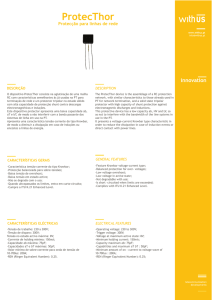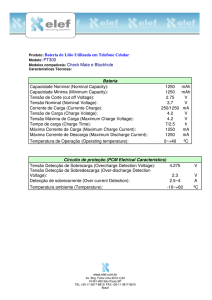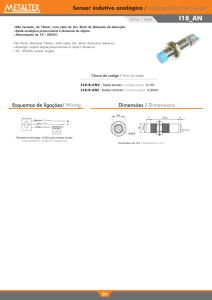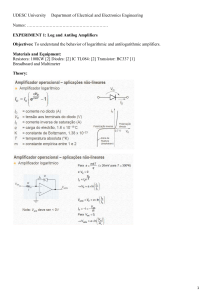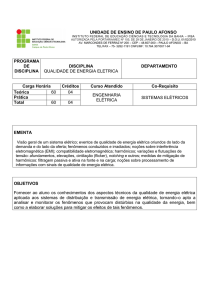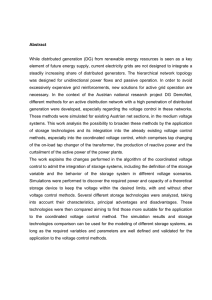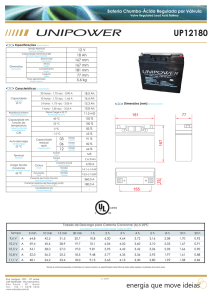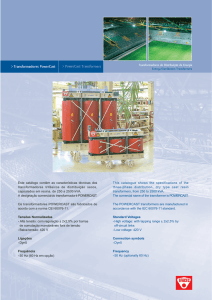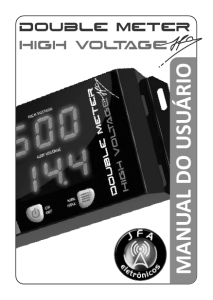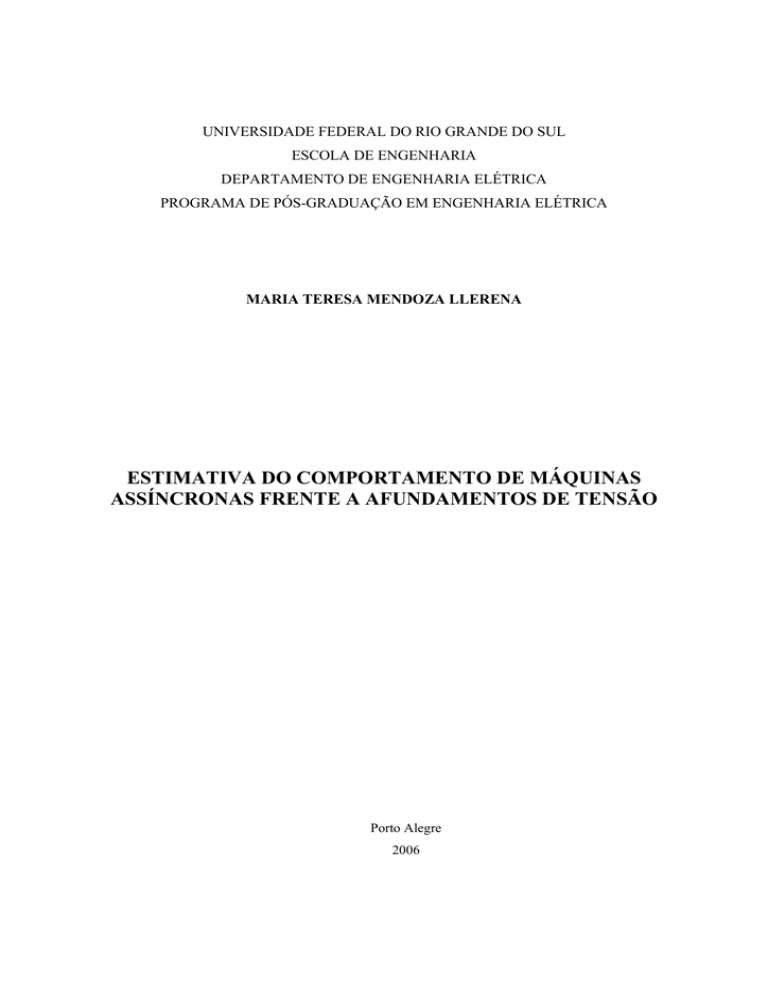
UNIVERSIDADE FEDERAL DO RIO GRANDE DO SUL
ESCOLA DE ENGENHARIA
DEPARTAMENTO DE ENGENHARIA ELÉTRICA
PROGRAMA DE PÓS-GRADUAÇÃO EM ENGENHARIA ELÉTRICA
MARIA TERESA MENDOZA LLERENA
ESTIMATIVA DO COMPORTAMENTO DE MÁQUINAS
ASSÍNCRONAS FRENTE A AFUNDAMENTOS DE TENSÃO
Porto Alegre
2006
RESUMO
Os afundamentos de tensão são reduções de curta duração entre o 10% ao 90% da
magnitude de tensão rms ou da tensão efetiva. Usualmente estes afundamentos são
associados com falhas no sistema de potência, mas podem ser causados pelo arranque de
grandes motores ou energização de transformadores. Apesar de sua curta duração, tais
eventos podem causar sérios problemas para alguns equipamentos. As conseqüências dos
afundamentos de tensão sobre a máquina assíncrona são: perda de velocidade durante o
afundamento e picos de corrente e conjugado que aparecem na queda de tensão e no
instante de restabelecimento. Este estudo visa analisar o comportamento da máquina
assíncrona frente a afundamentos de tensão e as características destes, devido à influência
do motor assíncrono como carga. Enfocando-se neste ponto, é que foram considerados
diferentes tipos de afundamentos devido a diferentes falhas, que produziram quedas de
tensão nos terminais da máquina assíncrona com variações na magnitude e no argumento
de tensão. As simulações foram realizadas aplicando um método analítico simplificado;
este método lineariza a equação diferencial elétrica da máquina assíncrona considerando a
velocidade mecânica constante, para o cálculo dos transitórios elétricos no inicio da queda
de tensão e no restabelecimento da mesma. Os transitórios obtidos pelo método numérico e
analítico foram comparados, para obter a precisão do método analítico com respeito ao
numérico. Além, foram realizados experimentos sobre a mesma base das simulações,
submetendo o sistema a diferentes quedas de tensão, considerando diferentes magnitudes e
durações no afundamento.
Palavras-chaves: Engenharia Elétrica. Afundamentos de Tensão. Transitórios
elétricos. Transitórios Mecânicos. Variações de tensão.
ABSTRACT
Voltage sags are short-durations reductions between 10% to 90% in rms voltage magnitude
or the effective voltage measure. Sags are usually associated with system faults, but can
also be caused by the starting of large motors or by the energizing of transformers. Despite
their short duration, such events can cause serious problems for a wide range equipment.
The consequences of voltage sags on the induction machine are: loss of speed during the
sag and current and torque peaks in the voltage drop and recovery instant. This study seeks
to analyze the behavior of the induction machine front voltage sags and the characteristics
these due to the influence of the induction motor as load, taking into account the different
voltage sags types due to different fault types, considering variations in the magnitude,
phase angle shift of voltage and variations of the mechanical load of the motor. The
simulations were carried out by means of a simplified induction motor model on Matlab,
this analytic method separate the electric transient of the mechanical transient, what result
in a large speed of calculation when compared with the numerical method. The transients
obtained by the analytic method were compared with the calculated by the numerical
method and obtained the maximum variation among them. Besides, the experiments were
carried out under the same bases as the simulations, submitting the system to different
voltage drops during several intervals of time.
Keywords: Electrical Engineering. Induction Machine. Voltage Sags. Electric
Transients. Mechanical Transients.

